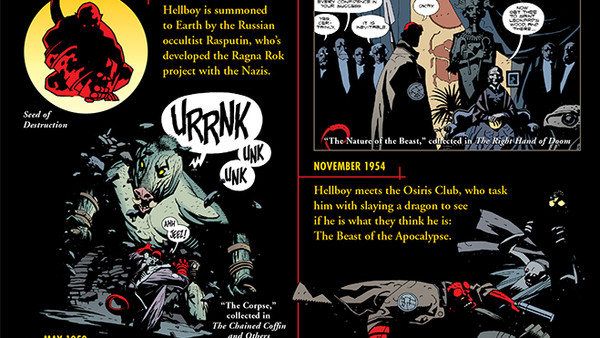Hellboy: Rise Of The Blood Queen - 8 Things It Must Do Differently From Del Toro's Films
8. Utilising History More Effectively

Any fan of Mignola's original Hellboy series will tell you that its linear timeline is a pretty big deal. You see, unlike most other comic books, Hellboy actually exists in a linear history; he has a clear life and death, beginning in 1944, and ending in 2011 (sort of, there was the whole afterlife thing that came after).
The point is, you can't tell a Hellboy story without some element of history. And, while del Toro's series certainly incorporated aspects of the character's past into the films, there was never a moment where we got to see Hellboy fighting trolls in the fifties, or rescuing Abe Sapien from government experiments in the seventies.
It's an aspect that Rise of the Blood Queen should certainly aim to address, especially if it's looking to produce a more faithful adaptation of the Mignola comic book. Depending on whether or not Hellboy is still a B.P.R.D. agent by the time of Blood Queen's story (he left the organisation at the turn of the century), we could see a story focus on him alone or as a part of an ensemble, potentially featuring the likes of Abe Sapien (yes), Johann Krauss (double yes), Roger the Homunculus (also yes) and, most obviously, Liz Sherman, who we really hope isn't a love interest this time.
Considering how much of a comeback the eighties and nineties seem to be making in superhero literature at the moment, either of those settings would be great. If Marshall was to opt for an earlier Hellboy piece, however, then the fifties would probably be a better pick.